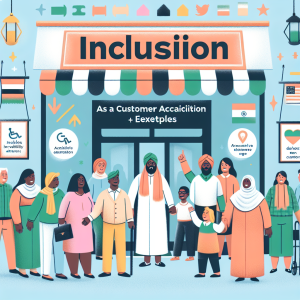The Ultimate Guide to No-Pain Copywriting
Let’s face it: writing doesn’t come easily to everyone. If you’re struggling to write copy that converts, you’re not alone. Every marketer (even the most experienced ones!) has stared at a blank page, feeling the pressure to craft compelling content.
But guess what? It doesn’t have to be a constant struggle. This guide is here to help you ditch the anxiety and embrace copywriting that gets results. We’ll dive into what makes copy “good” and explore real-world examples to inspire your writing.
What is good copy, anyway?
Before we get ahead of ourselves, let’s define what we mean by “good” copywriting. Simply put: good copywriting is clear, concise, and persuasive. It speaks directly to your target audience, understands their pain points, and offers solutions.
Why should you care about it?
Here’s the deal: your copy is often the first impression you make on potential customers. If it’s confusing, boring, or irrelevant, you can kiss those leads goodbye.
Think of your copy as your online salesperson. It’s working 24/7 to engage your audience, build relationships, and ultimately, drive conversions.
What makes copywriting effective?
Great copywriting doesn’t just happen by accident. It’s the result of careful planning, a deep understanding of your audience, and a sprinkle of creativity. Let’s break down some key elements:
-
It all starts with your audience: The best copy resonates with your ideal customer. This means understanding their demographics, pain points, motivations, and aspirations.
-
Clarity is king (or queen): Don’t make your audience struggle to understand your message. Use simple language, avoid jargon, and get to the point quickly.
-
Benefits over features: Highlight how your product or service solves your customer’s problems. What’s in it for them? Focus on the value you provide.
-
A clear call to action: Don’t leave your audience hanging! Tell them exactly what you want them to do next, whether it’s signing up for a free trial, downloading a resource, or making a purchase.
Decoding Successful Copywriting Examples
Let’s analyze how different brands leverage these principles:
1. Emotional Storytelling: TOMS Shoes
TOMS doesn’t just sell shoes; they sell a feeling. Their copy revolves around their “One for One” model, highlighting the impact of each purchase.
-
Example: “With every product you purchase, TOMS will help a person in need. One for One.”
Key Takeaway: Weave a narrative that resonates emotionally with your audience, connecting your product with a deeper purpose.
2. Humor and Wit: Innocent Drinks
Innocent Drinks stands out with its playful, humorous tone. They inject wit into product descriptions and marketing materials, making their brand approachable and memorable.
-
Example: “Our fruit & veg never sees the inside of a can. Nope, we squash, blend, and bottle our drinks fresh, then ship them straight to your local shop.”
Key Takeaway: Don’t shy away from humor if it aligns with your brand. A touch of wit can make your copy more engaging and shareable.
3. Benefits over Features: Slack
Instead of listing technical specs, Slack focuses on the benefits their platform provides, addressing user pain points directly.
-
Example: “Slack brings all your communication together in one place.”
Key Takeaway: Highlight how your product or service solves a problem or improves the user’s life, emphasizing the value proposition.
4. Creating a Sense of Urgency: Booking.com
Booking.com uses scarcity tactics to encourage immediate action, creating a sense of urgency.
-
Example: “Only 2 rooms left at this price!”
Key Takeaway: Leverage limited-time offers or highlight dwindling availability to nudge users towards conversion.
5. Powerful Calls to Action: Spotify
Spotify’s calls to action are clear, concise, and enticing, leaving no room for confusion.
-
Example: “Get 3 Months of Premium for Free.”
Key Takeaway: Use action-oriented language that tells the reader exactly what to do next, whether it’s “Sign Up,” “Learn More,” or “Shop Now.”
Elevating Your Own Copywriting
Ready to put these lessons into action? Here’s a step-by-step guide:
-
Know Your Audience: Define their demographics, interests, and pain points.
-
Craft a Compelling Headline: Grab attention and entice readers to delve deeper.
-
Highlight Benefits: Focus on what your product or service does for the user.
-
Use Strong Calls to Action: Guide readers towards the desired action.
-
Proofread and Edit: Ensure clarity, conciseness, and error-free writing.
By studying successful examples and applying these key principles, you can transform your copywriting from good to exceptional, driving engagement and conversions for your brand.







